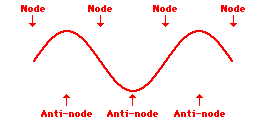ronsatspokane
Gold $$ Contributor
I can easily see why two tubes cut from the same stock would behave differently. How well blended the steel is would impact how the gun drill bores the hole, how the tool creating the rifleing behaves (be it cut or button) and how the harmonics of a given charge are affected. These days the steel is usually well blended. I have only encountered 1 barrel that would not shoot at all. It looked good in the bore scope. It was from a well known barrel maker. It was the same contour, twist rate and length and "in theory" the same steel as the previous shot out barrel but it would not shoot as well as the shot out barrel. I replaced it with a budget screw on barrel and was back to shooting under 1/2 MOA. Never did figure out why that barrel would not shoot and I dumped a lot of money into different bullets, powders, primers, charge weights and seating depths. Perhaps chatter in the gun drill or rifling button/cutter? Most barrels I have installed in that caliber shoot the same load just as well as the previous barrel did when it was new.
As far as flat spots in velocity across a number of charge weights, never seen it. At increasing charge weights I have always seen an increase in velocity. That increase in velocity is not always linear but I've seen it for years using optical chronographs, Magnetospeed and labradar. I have not been able to correlate shrinking velocity gaps to a specific "optimal" load. Perhaps there is some correlation but I have not been diligent about connecting those particular dots. What I have found is that repeatable tight groups tend to repeat over the long haul so that is what I look for during load development. Only after I find that do I gather velocities, ES and SD info. In my opinion those tight repeatable groups are indicative of the fact that the load is in tune with the harmonics of the rifle. Some consider my approach to be that of a philistine. I wear that label proudly.
As far as testing different powders, primers, bullets and seating depths throughout a day, I don't buy what I'm being told is proof of optimal charge weights or ladder tests. I think we have all shot a given load at various points in a day (and even across strings) and seen different behaviors from that same load. I chock it up to subtle wind or atmospheric changes or maybe even the the increase in barrel fouling and perhaps all of the above. When the testing is at distance, we can leak a round out of the X ring or the 10 ring even between shots. And that leak can be vertical or horizontal. Again, not an indicator of load differences in my mind, simply a missed wind call. Again, a philistine by any other name.
As far as flat spots in velocity across a number of charge weights, never seen it. At increasing charge weights I have always seen an increase in velocity. That increase in velocity is not always linear but I've seen it for years using optical chronographs, Magnetospeed and labradar. I have not been able to correlate shrinking velocity gaps to a specific "optimal" load. Perhaps there is some correlation but I have not been diligent about connecting those particular dots. What I have found is that repeatable tight groups tend to repeat over the long haul so that is what I look for during load development. Only after I find that do I gather velocities, ES and SD info. In my opinion those tight repeatable groups are indicative of the fact that the load is in tune with the harmonics of the rifle. Some consider my approach to be that of a philistine. I wear that label proudly.
As far as testing different powders, primers, bullets and seating depths throughout a day, I don't buy what I'm being told is proof of optimal charge weights or ladder tests. I think we have all shot a given load at various points in a day (and even across strings) and seen different behaviors from that same load. I chock it up to subtle wind or atmospheric changes or maybe even the the increase in barrel fouling and perhaps all of the above. When the testing is at distance, we can leak a round out of the X ring or the 10 ring even between shots. And that leak can be vertical or horizontal. Again, not an indicator of load differences in my mind, simply a missed wind call. Again, a philistine by any other name.












